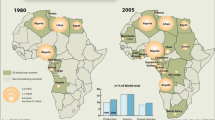Abstract
This paper investigates the influence of geohazards on the existing oil pipeline and the potential interaction between the proposed new oil pipeline and preexisting transportation structures along the Qinghai–Tibet Plateau Engineering Corridor. The current Golmud–Lhasa oil pipeline has been seriously affected by retrogressive thaw slumps caused by surface water being channeled through culverts causing serious erosion problems. Climate data show that the air temperature increased at a rate of 0.0281 °C/a for the past 60 years along the corridor. To design the new pipeline, the effects of revegetation, climate warming and pipe insulation on permafrost have been simulated using numerical modeling. A warm oil pipeline would potentially lead to significant thawing of the permafrost foundation. When climate warming is not considered, insulation of the buried pipe could keep the permafrost stable. Revegetation and the use of utilidors could counteract the influence of heat input from the oil pipe, and even a 1.1 °C/50a climate-warming rate. However, for the 2.6 °C/50a climate-warming-rate scenario, they are inadequate to keep the permafrost stable. Vegetation cover is important to reduce the effect of climate warming on both the natural and the human-impacted permafrost. Revegetation after construction is important to protect the permafrost environment as well as the oil pipeline itself.











Similar content being viewed by others
References
Bonacina C, Comini G (1973) Numerical solution of phase-change problems. Int J Heat Mass Transf 16:1825–1832
Crank J, Nicolson P (1947) A practical method for numerical evaluation of solutions of partial differential equations of the heat conduction type. Proc Cambridge Philos Soc 43:50–67
George NF (1995) Natural convection from a buried pipe with external baffles. Num Heat Transf 27(5):595–609
Hastaoglu MA, Hakin AA (1996) Freezing time predictions of buried pipes: a 3-D transient simulation. Chem Eng Technol 19:243–248
He R, Jin H (2010) Permafrost and cold-region environmental problems of the oil product pipeline from Golmud to Lhasa on the Qinghai-Tibet Plateau and their mitigation. Cold Reg Sci Technol 64(3):279–288
Huang WF, Han HW, Shi LQ, Niu FJ, Deng YS, Li ZJ (2013) Effective thermal conductivity of thermokarst lake ice in Beiluhe Basin, Qinghai-Tibet Plateau. Cold Reg Sci Technol 85:34–41
Jin HJ, Yu QH, Wang SL, Lü LZ (2008) Changes in permafrost environments along the Qinghai-Tibet engineering corridor induced by anthropogenic activities and climate warming. Cold Reg Sci Technol 49(2):317–333
Johansson M, Akerman J, Keuper F, Christensen TR, Lantuit H, Callaghan TV (2011) Past and present permafrost temperatures in the Abisko area: redrilling of Boreholes. Ambio 40:558–565
Kokelj SV, Jorgenson MT (2013) Advances in thermokarst research. Permafrost Periglac Process 24(2):108–119
Lai YM, Zhang LX (2003) Cooling effect of ripped-stone embankments on Qinghai-Tibet Railway under climatic warming. Chin Sci Bull 48:598–604
Leonid B, Eli K (1999) Thawing and refreezing around a buried pipe. Chem Eng Process 38:239–247
Li X, Cheng GD (1999) The global warming reponse model of the high altitude permafrost. Sci China (Ser D) 29(2):185–192
Li G, Sheng Y, Jin HJ, Ma W, Qi JL, Wen Z, Zhang B, Mu YH, Bi GQ (2010) Development of freezing–thawing processes of foundation soils surrounding the China–Russia Crude Oil Pipeline in the permafrost areas under a warming climate. Cold Reg Sci Technol 64(3):226–234
Niu FJ, Lin ZJ, Liu H, Lu JH (2011) Characteristics of thermokarst lakes and their influence on permafrost in Qinghai-Tibet Plateau. Geomorphology 132(3–4):222–233
Olsen MS, Callaghan TV, Reist JD (2011) The changing arctic cryosphere and likely consequences: an overview. Ambio 40:111–118
Qin DH (2002) The comprehensive evaluating report on the environment evolvement in west China. Science Press, Beijing
Romanovsky VE, Drozdov DS, Oberman NG, Malkova GV, Kholodov AL, Marchenko SS, Moskalenko NG, Sergeev DO, Ukraintseva NG, Abramov AA, Gilichinsky DA, Vasiliev AA (2010) Thermal state of permafrost in Russia. Permafrost Periglac Process 21(2):136–155
Rowley RK, Watson GH, Wilson TM, Auld RG (1973) Performance of a 48 in. warm-oil pipeline supported in permafrost. Can Geotech J 10(2):282–303
Shiklomanov NI, Nelson FE (2013) Thermokarst and civil infrastructure. In: Shroder JF (ed) Treatise on geomorphology. Academic, San Diego, pp 354–373
Washburn AL (1980) Permafrost features as evidence of climatic change. Earth Sci Rev 15(4):327–402
Wen Z, Sheng Y, Jin HJ, Li SY, Li GY, Niu YH (2010) Thermal elasto-plastic computation model for a buried oil pipeline in frozen ground. Cold Reg Sci Technol 64(3):248–255
Wu ZW, Liu YZ (2005) Frozen soil foundation and constructions. Ocean Press, Beijing
Wu ZW, Cheng GD, Zhu LN, Liu YZ (1988) Roadbed engineering in permafrost region. Lanzhou University Press, Lanzou
Wu QB, Shen YP, Shi B (2003) Relationship between frozen soil together with its water-heat process and ecological environment in the Tibetan Plateau. J Glaciol Geocryol 25(3):250–255
Wu QB, Zhang P, Jiang GL, Yang YZ, Deng YS, Wang XB (2014) Bubble emissions from thermokarst lakes in the Qinghai-Xizang Plateau. Quat Int 321:65–70
Yang M, Nelson FE, Shiklomanov NI, Guo DL, Wan GN (2010) Permafrost degradation and its environmental effects on the Tibetan Plateau: a review of recent research. Earth Sci Rev 103(1–2):31–44
Zhang J, Qu G, Jin HJ (2010) Estimates on thermal effects of the China-Russia crude oil pipeline in permafrost regions. Cold Reg Sci Technol 64(3):243–247
Acknowledgments
This study is supported by the National Natural Science Fund (41571070, 41461016) and the Fund of the National Key Basic Research and Development Program (2012CB026102).
Author information
Authors and Affiliations
Corresponding author
Rights and permissions
About this article
Cite this article
Yu, W., Han, F., Liu, W. et al. Geohazards and thermal regime analysis of oil pipeline along the Qinghai–Tibet Plateau Engineering Corridor. Nat Hazards 83, 193–209 (2016). https://doi.org/10.1007/s11069-016-2308-y
Received:
Accepted:
Published:
Issue Date:
DOI: https://doi.org/10.1007/s11069-016-2308-y




